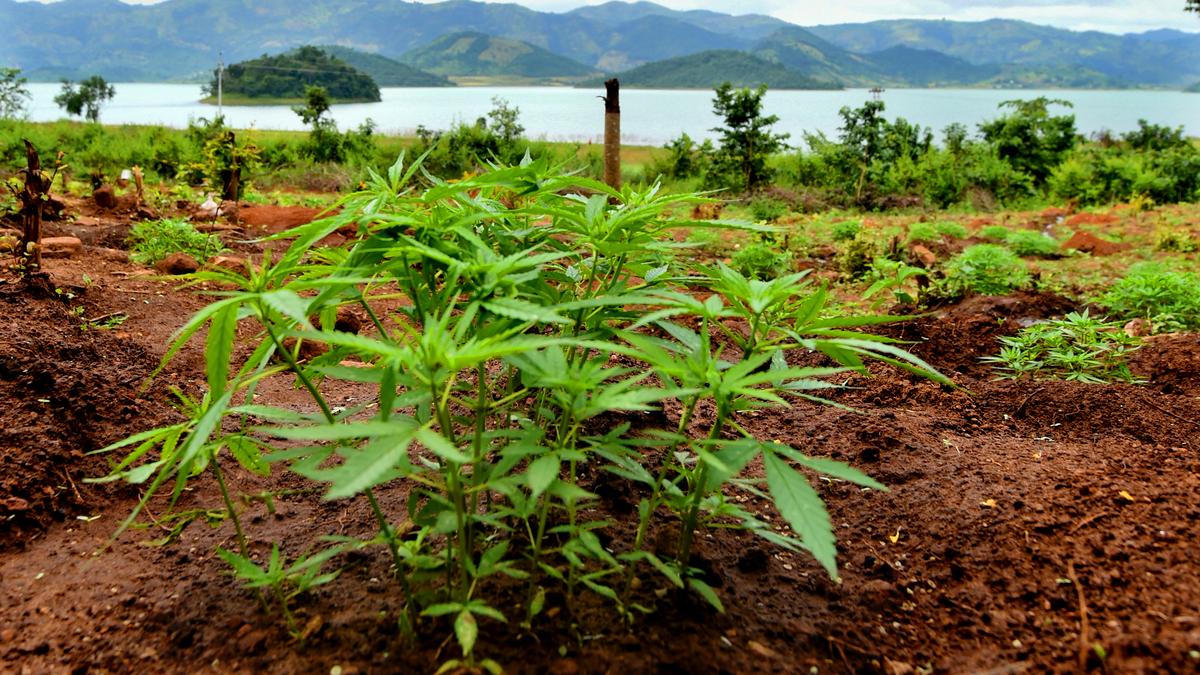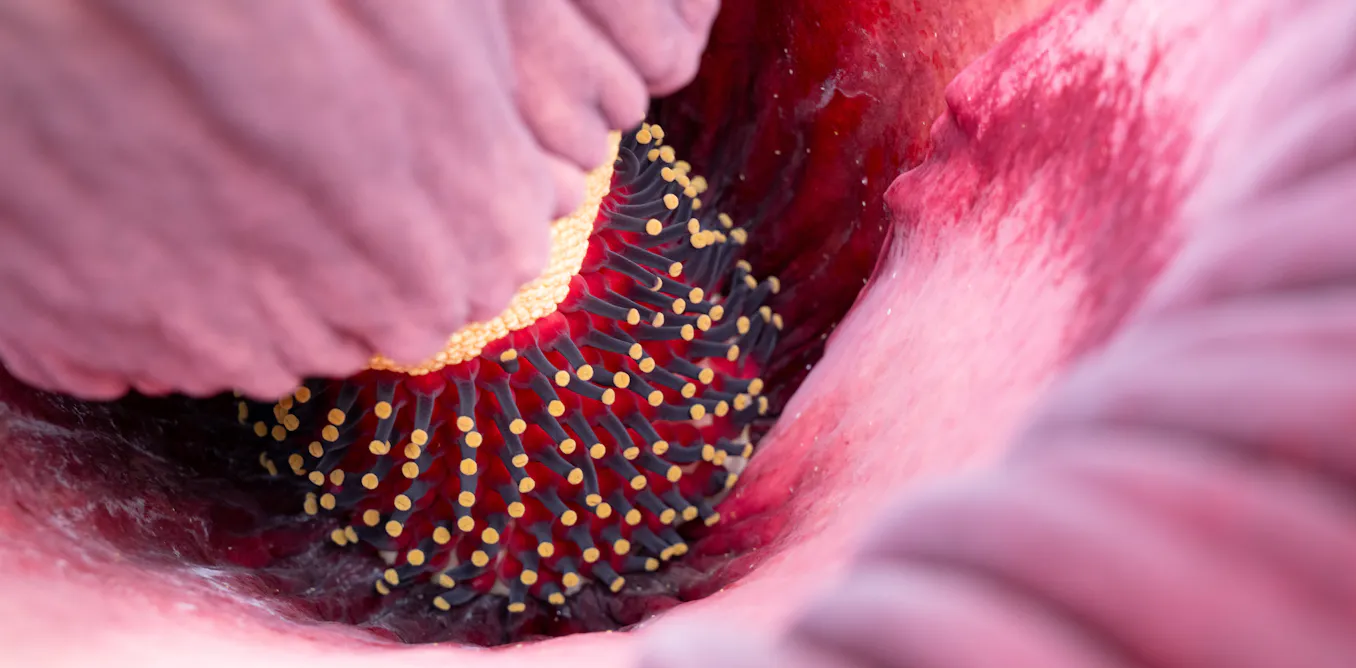
A 17-year-old boy from Tirupati skipped his first-year intermediate examination in December 2024 and silently left home. His widowed mother, a Central government employee, grew suspicious when her teenage son failed to return home, and realised that her 60 grams gold chain and ₹28,000 cash was missing from the almirah. She had her doubts about her son’s addiction but failed to understand how severe it was.
The mother did not approach the police, instead launched a frantic search with the help of the boy’s friends. After a week, the boy was traced to a coastal village at the extreme end of Andhra Pradesh bordering Odisha’s Ganjam district. He was found with a bundle of dried ganja, an old weed-smoking pipe, and just ₹35 in cash, enjoying the sea breeze under the influence.
On his mother’s questioning, the boy revealed that he sold the chain for ₹30,000 to buy one-kg packet of ganja. He told her that he was tagging along with four middlemen, and had taken care of their meals for a week.
They returned to Tirupati, and the mother warned the boy that if he ever touches ‘ganja’ or any other substances, she would end her life. Under his mother’s continued care and attention, the boy successfully put an end to ‘that dark chapter’ and is now pursuing a B. Tech degree from a private college in Chennai.
However, not everyone is as fortunate as him. Many youths aged between 17 and 30 are trapped in the grip of addiction, struggling and battling a fight between survival and life.
The battle against drugs has been taken up rigorously by several non-governmental organisations and government agencies including EAGLE (Elite Anti-Narcotics Group for Law Enforcement), Government Railway Police, Railway Protection Force, and civil police.
Several youth from the Rayalaseema districts in search for substance have been travelling to Andhra–Odisha border (AOB) region. Officials claim it is because the ganja cultivation in Andhra Pradesh went “zero” after the formation of EAGLE at the fag end of last year, forcing peddlers and consumers from across the Southern States to depend on the eastern side of AOB region, where an estimated 10,000-plus acres still thrive on contraband cultivation.
However, the latest measures targeting ganja smuggling, sale, and consumption, still failed to control the deep-rooted tradition of intoxication, dating back to the British colonial period, in the Rayalaseema districts. A mistaken belief is that a single ‘roll of joint with ganja’ is equal to three-quarters of rum.
Before the NDPS Act came into force in 1985, ganja use was rampant with small packets available at railway stations, bus stands, and arterial junctions in every town across Rayalaseema. Later, although availability remained, consumption became more secretive.
According to police officials, the modus operandi is always to target both the “rich” and the “working class”. Students and daily wage workers often cannot afford high prices, so they buy adulterated stuff, which intensifies their craving, pushing them deeper into addiction. The affluent youth, however, get fine-quality portions offering a “supreme experience” that triggers hallucinations, but this too is followed by substandard or adulterated stuff.
Back in the day a ganja-filled cigarette cost just ₹10, but today, three such cigarettes likely cost around ₹300 or more. A drug peddler operating between Visakhapatnam and Chennai, with half a dozen supply points, had once told the police that the challenge was not stopping the flow of ganja from AOB region, but preventing youths from Rayalaseema — and even neighbouring States — from falling prey to it again and again.
Just before the COVID pandemic struck the nation, two people were caught with small quantities of ganja near an educational institution at Puttur in Chittoor district. The investigation revealed that peddlers first approached students and then eventually made them chase the peddlers for supply. In 2011, two engineering students were arrested in Tirupati with cocaine worth ₹1.2 crore, exposing the vulnerability of students to high-level intoxication.
In recent years, police have been cautious about revealing the involvement of students, either as consumers or peddlers. The entry of minors and women — in some cases mother and child— has baffled enforcement agencies. By August 2025, police recorded 176 offenders in the combined Chittoor and Tirupati districts, including 50 repeat offenders.
Kadapa–Chittoor highway has now turned into a sensitive corridor for ganja trafficking. While major hauls are rare, regular vehicle checks lead to small but frequent seizures. Police maintain special focus on Mangampet and adjoining Mandals, as traffickers use lesser-known feeder roads.
A senior Intelligence officer who has led multiple operations against red sanders and ganja smuggling explains why Rayalaseema — with Tirupati as its transit capital — continues to be a hub.
“Smugglers mostly move in small groups, often using women and children as couriers. Lured by offers far beyond their daily wages, women who earn just ₹400 a day are offered ₹10,000 for a single trip between Tirupati and Visakhapatnam, sometimes in luxury cars and decent clothes. Once successful, they make multiple trips per month. To avoid police detection, gangs frequently rotate couriers,” says the officer.
Police avoids extensive checking when women and children are involved. Four bags carrying 5kg each are usually camouflaged with undergarments and cosmetics, which discourages thorough checks. The people involved in the supply chain are often disguised as devotees, wearing seasonal malas like Ayyappa, Govinda, or Shiva, banking on pilgrim routes across Andhra Pradesh, Tamil Nadu, Karnataka, and Tirupati usually serves as the prime logistics hub for distribution to Chennai, Bengaluru, and beyond, he added.
“Sometimes, interrogation becomes funny,” says one officer, adding “A couple of years ago near Nagari, we caught a 55-year-old man with a woman and child — posing as his wife and son — all in Ayyappa mala. When questioned, the man began cursing us in Lord Ayyappa’s name. Such religious disguises make it difficult for police to act.”
Due to heightened surveillance measures, the wholesale price of ganja has reportedly doubled from ₹5,000 per kg last year to ₹10,000 per kg. The police crackdown on trains coming from Odisha has forced peddlers to rely on road routes.
Former Chittoor Superintendent of Police V.N. Manikanta Chandolu said that controlling transit routes is tougher than eradicating cultivation. He admitted that minors and students are often trapped by peddlers, but assured that preventive measures are being stepped up.
“We are holding awareness campaigns in educational institutions, forming EAGLE clubs, and displaying posters. Through ‘Operation Flush-Out,’ we are strictly banning the sale of tobacco products near schools and colleges. Patrolling and checks have been intensified on trains and buses. Interestingly, to evade sniffer dogs, peddlers use airtight packing for their consignments. Our goal is to keep Andhra Pradesh a ganja cultivation-free State, and enforcement along transit routes will remain tight,” he said.
Former District Medical and Health Officer Dr P. Ravi Raju, president of the Andhra Pradesh Nursing Homes Association, warned against use of ganja. “Medical studies show that youth are highly vulnerable. Addicts lose appetite, suffer muscle loss, and become emaciated. They isolate themselves out of shame and, with impaired brain function, may commit crimes under hallucination. Long-term addiction often leads to multiple organ failure or even suicide,” he cautioned.
According to the statistics, in 2013, police registered only one ganja case in Chittoor, where the accused escaped, leaving behind 50 grams of ganja worth ₹1,200. By 2024–2025, cases rose to 92, with 283 accused cited, 245 arrests made, and 290 kg seized — valued at ₹55 lakh. In Sri Sathya Sai district, 94 offenders were identified under the NDPS Act, with 19 cases registered in 2025 alone, 47 kg seized, and 64 arrested.



